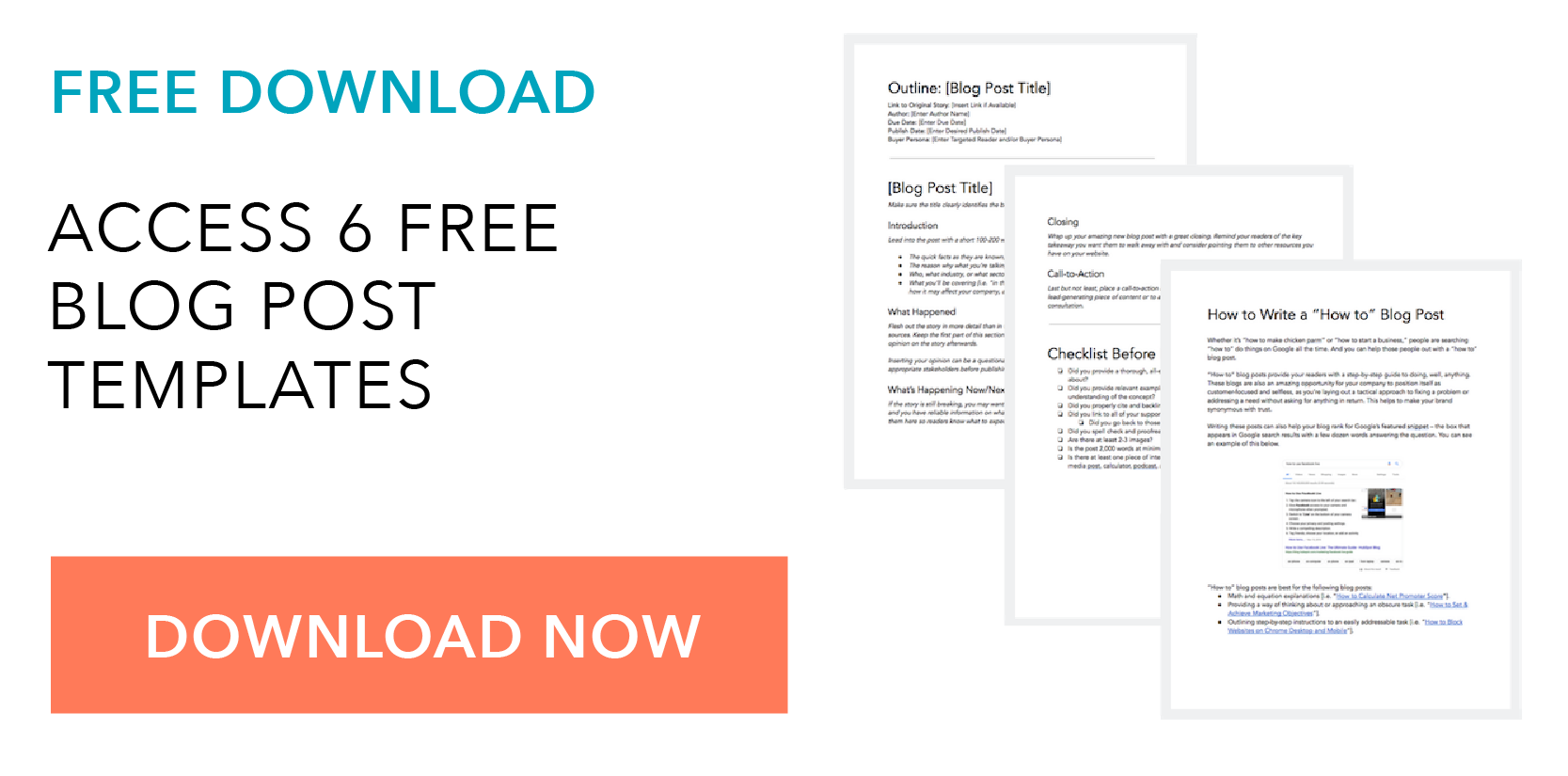How do you know which blog posts are your best ones? To find this out, run a blog leads analysis and attribution report -- click here to learn how. Make a list of your top 10 posts along with their traffic numbers and conversion rates.
Now, ask yourself which scenario your top posts fit into overall: 1) low traffic but high conversion rate; 2) high traffic and high conversion rate; 3) high traffic but low conversion rate; or 4) low traffic and low conversion rate? In this post, I'll dig into what each of these four different scenarios might mean and how you can turn that information into an actionable plan for the future.
Scenario #1: Low Traffic & High Conversion Rate
If you're not getting a lot of traffic to your blog but your conversion rate is high, it's a good indication that the traffic you're getting is high quality. But in order to grow your blog, you'll need to work on increasing traffic to your blog while still maintaining that high conversion rate.
Here are ways you can increase your traffic:
- Make it easy for your readers to share your content. Include "Tweet this" links throughout your content that have pre-written tweets. "Click-to-Tweet" is a great tool to do that.)
- Email your blog content to your database. There may be people in there interested in your content but unaware that they can subscribe to your blog.
- Optimize your blog posts around keywords you want to rank for. You can learn how to do this here.
- Create content that answers questions you hear about on social media. Then, you can tweet it out to anyone who was discussing the question.
- Link to other blog posts you've written within your post. This'll help keep readers on your blog longer, get traffic to some of your other posts, and benefit your overall SEO strategy.
- Look at a report that shows where your traffic is coming from. If you are getting some traffic from certain channels but not others, you'll learn to focus more on the channels that are driving visits to your site. (Scroll to the bottom of this post to learn more about this.)
- Build relationships with other bloggers and influencers in your industry. They can help you reach more people in your industry by promoting your content.
As you're working to attract more traffic to your blog, keep a close watch on your conversion rate. Even though you want more traffic to your website, you don't want the quality of the traffic to suffer and therefore lower your conversion rate.
Scenario #2: High Traffic & High Conversion Rate
You may take a look at your top 10 blog posts and see that not only do they have a high conversion rate, but they have high traffic, too. That's great news! In this situation, the next question isn't, "How can I increase my metrics?" Instead, it's, "How can I maintain these high metrics?"
Here are some ways to get you started:
- Note if there was a specific topic or topics that you blogged about in many of your top posts. If you see the topic appeared multiple times, write about that topic again from a different angle. (Here's some help on turning one topic into many.)
- Note which type of post appeared most in your top ten. Were many of your top posts quick tips? Detailed analyses? Infographic or image-heavy posts? Videos? How-to posts? If you see a pattern, prioritize that format for future blog posts.
- Note the authors of your top posts. Was it someone on your team? On another team within your company? Certain guest bloggers? While these authors won't be able to write all your future posts, it's certainly a good thing to know so you can encourage and coach them to contribute more often, and allocate resources for great guest bloggers if applicable.
- Note how you promoted those top blog posts. Was it through social media, organic traffic, email marketing, or something else? Some of these channels may have done much better than others. Keep promoting your posts on the channels that did well, and consider scaling back on the channels that didn't do as well. This will give you an opportunity to invest your resources in your top performing channels.
- Note where you placed calls-to-action on your top posts. Were there multiple opportunities to convert? You may have had a call-to-action at the end of your blog post as well as others sprinkled throughout your post. See how your different calls-to-action compared and see how you can replicate their success.
Scenario #3: High Traffic & Low Conversion Rate
You're attracting a lot of people to your site, but they aren't converting. That could mean a couple of things.
First, that could mean that they aren't qualified visitors. You may be writing interesting content that simply doesn't relate to the interests of your target audience. If this is the case, you'll want to take a hard look at whether your content strategy aligns with your target audience. How are you deciding which types of content to create? Is the content you're creating relevant to your audience's interests and needs?
In another scenario, your content could be just fine -- it's just that your path to conversion isn't clear. Your blog readers may be interested in hearing more from you and reading your stuff, but you aren't giving them a compelling reason to convert. Or, they aren't sure how to get more content that pertains to their interests.
If this sounds like you, here are our suggestions:
- Take a look at where your calls-to-action are placed. Is it easy for your visitors to convert into a lead? Are there multiple opportunities for them to convert throughout the blog post? Be sure they're visible and you're making it as easy as possible to convert. The last thing you want to do is hide your CTAs where no one can see them.
- Is your primary CTA related to the blog post it's been placed on? It can be confusing for website visitors to read a blog post on one topic and then click on a CTA that brings them to another topic. Keep the conversion path consistent from start to finish.
- Assess how compelling your offers are. Are they compelling enough to get someone to convert into a lead? If someone can get the same information on your website without filling out a form, they probably will. Make your website visitors curious enough that they would want to convert into a lead.
If you aren't getting qualified visitors to your site, though, then you have more work to do. After all, if you have 10,000 blog visitors but none of them are qualified, then your blog posts aren't doing much to help bring in new customers.
If this sounds like you, here are a few things to try:
- Take a hard look at whether your content strategy aligns with your target audience. How are you deciding what type of content to write? Is the content actually relevant to your audience?
- See what keywords you rank for. (Learn how here.) Are you ranking for the keywords that are the most important to your business? If not, work on optimizing your blog posts and creating new blog content around the keywords that your buyer persona searches for.
- Look at conversion rate by channel. Do certain channels have a higher conversion rate than others? In the example below, let's say you're analyzing how well your social media channels are doing. Even though Twitter has the most visits, it has the lowest visitor-to-contact conversion rate. While Twitter may be a good channel in theory, LinkedIn has the higher conversion rate in this case -- so it'd make sense to consider whether or not your core audience is on LinkedIn rather than Twitter or Facebook. If so, you'll want to invest more of your efforts in LinkedIn than the other social media channels.

(HubSpot customers: You can see all of your marketing channels' individual performance in the Analytics tool.)
Scenario #4: Low Traffic & Low Conversion Rate
If you're creating content but it isn't driving a lot of traffic and has a low conversion rate, you need to change your approach. To start, let's focus at the top of the funnel traffic you're trying to generate to your blog.
Why start with traffic? Because without traffic to your blog, no one will convert to the next stage in the funnel. Use some of the tips from Scenario #1 (low traffic & high conversion rate) to get more people on your website and reading your content.
Once you've successfully increased your traffic, shift your focus to conversion rate. One of the most important things you can do is ensure you have a clear path to conversion. For example, let's say you write a blog post about DIY design. Is there a clear CTA at the end of the blog post leading to a design-related offer? Having blog content that aligns with the content piece that your visitors convert on is essential. Use some of the tips from Scenario #3 (high traffic & low conversion rate) to create a clear path to conversion for your audience.
What other insights have you learned from figuring out your top performing blog posts? Share with us in the comments.
Marketing Analytics
.png?width=112&height=112&name=Image%20Hackathon%20%E2%80%93%20Horizontal%20(67).png)





![A Simple Guide to Marketing ROI [Formula & Examples]](https://53.fs1.hubspotusercontent-na1.net/hubfs/53/a-simple-guide-to-marketing-ROI.webp)



![Improve Conversion Rates by Changing Your Shipping Options [Infographic]](https://53.fs1.hubspotusercontent-na1.net/hub/53/file-2633582302-jpg/eCommerce/121.jpg)

